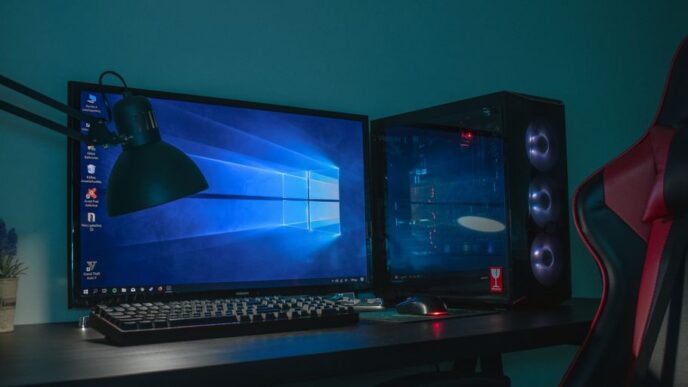The Olympic Games epitomize the height of human athletic achievement, showcasing the talents of the world’s most dedicated and skilled athletes. Over the years, advancements in technology have continually redefined the boundaries of performance, training, and competition. One of the most transformative tools in modern sports science is video analysis. From simple playbacks to sophisticated motion capture systems, video analysis has revolutionized the way coaches train athletes, strategize for competitions, and enhance performance. This article explores the profound impact of video analysis on Olympic coaching and athlete performance, detailing its evolution, current applications, and future prospects.
The Evolution of Video Analysis in Sports
Early Beginnings: The Advent of Playback
The concept of using video for athletic training can be traced back to the mid-20th century. Initially, coaches and athletes relied on basic playback of footage captured during practices and competitions. This method allowed them to review performances, identify mistakes, and make necessary adjustments. However, these early attempts were limited by the technology of the time, which often involved cumbersome equipment and low-quality recordings.
Despite its limitations, the ability to visually review performance was a significant step forward. Coaches could demonstrate to athletes the precise moments where errors occurred, providing a clear visual reference for improvement. This marked the beginning of a new era in sports training, where visual feedback became an essential component of the coaching process.
Advancements in Technology: From Analog to Digital
The transition from analog to digital technology in the late 20th century brought about a revolution in video analysis. Digital cameras, camcorders, and editing software allowed for higher quality recordings and more sophisticated analysis. Coaches could now slow down footage, zoom in on specific moments, and compare performances side by side.
The advent of digital technology also made video analysis more accessible and user-friendly. Portable devices and easy-to-use software meant that coaches could conduct detailed reviews without the need for specialized equipment or extensive technical knowledge. This democratization of video analysis paved the way for its widespread adoption across various sports.
The Rise of Specialized Software and Motion Analysis
As technology continued to evolve, specialized video analysis software began to emerge. These programs offered advanced features such as frame-by-frame analysis, motion tracking, and biomechanical assessment. Coaches could now dissect an athlete’s movements with unprecedented precision, examining factors such as joint angles, force application, and body positioning.
One of the most significant advancements was the integration of motion analysis technology. Motion capture systems, which use markers placed on the body to track movements in three dimensions, provided detailed insights into an athlete’s biomechanics. This level of analysis was particularly beneficial for sports that required precise and complex movements, such as gymnastics, diving, and track and field.
The Role of Video Analysis in Modern Olympic Coaching
Enhancing Technique and Skill Development
One of the primary applications of video analysis in modern coaching is the enhancement of technique and skill development. By capturing and reviewing footage of training sessions and competitions, coaches can identify subtle flaws and areas for improvement that may not be apparent to the naked eye.
For example, in track and field events such as sprinting and hurdling, video analysis can reveal inefficiencies in an athlete’s stride, takeoff, and landing. Coaches can use this information to fine-tune an athlete’s technique, ensuring optimal performance and reducing the risk of injury. Similarly, in swimming, video analysis can help identify issues with stroke mechanics, breathing patterns, and turns, allowing for targeted interventions to improve efficiency and speed.
Tactical and Strategic Analysis
Video analysis is also invaluable for tactical and strategic planning. By reviewing footage of past competitions, coaches can analyze the strategies and techniques of opponents, identifying their strengths and weaknesses. This information can inform the development of game plans and tactics that exploit the opposition’s vulnerabilities while leveraging the athlete’s strengths.
In team sports such as soccer, basketball, and volleyball, video analysis can be used to study the positioning, movement, and decision-making of players. Coaches can design drills and practice scenarios that simulate game situations, helping athletes develop the skills and instincts needed to execute strategies effectively. This level of preparation can be the difference between victory and defeat in high-stakes Olympic competitions.
Injury Prevention and Rehabilitation
Injury prevention and rehabilitation are critical aspects of athletic training, and video analysis plays a crucial role in both areas. By examining an athlete’s movements, coaches and sports scientists can identify biomechanical issues that may predispose them to injuries. For instance, video analysis can detect asymmetries in gait, improper landing techniques, or excessive joint loading, all of which can contribute to overuse injuries and acute trauma.
During the rehabilitation process, video analysis provides valuable feedback on an athlete’s progress. Coaches and physiotherapists can monitor the effectiveness of rehabilitation exercises, ensuring that the athlete is performing them correctly and safely. This continuous feedback loop helps to optimize recovery and reduce the risk of re-injury.
Psychological and Cognitive Benefits
The benefits of video analysis extend beyond the physical realm, offering significant psychological and cognitive advantages. For athletes, seeing their performance from an external perspective can enhance self-awareness and confidence. Visualizing successful performances and improvements can boost motivation and reinforce positive behaviors.
Furthermore, video analysis can aid in mental rehearsal and visualization techniques. Athletes can mentally practice their routines and strategies by watching footage of themselves and their opponents. This mental preparation can improve focus, reduce anxiety, and enhance overall performance.

Case Studies: Video Analysis in Action
Usain Bolt: Sprinting to Glory
Usain Bolt, the fastest man in history, utilized video analysis extensively throughout his career. Bolt’s coaches used high-speed cameras and motion analysis software to dissect every aspect of his sprinting technique. By examining his start, acceleration, and top speed phases, they identified areas for improvement and made precise adjustments to his form.
Video analysis helped Bolt optimize his stride length, frequency, and running posture, contributing to his unprecedented success on the track. By continuously refining his technique, Bolt was able to maintain his dominance and set multiple world records.
Simone Biles: Elevating Gymnastics
Simone Biles, widely regarded as the greatest gymnast of all time, has also benefited from video analysis. In a sport that demands precision, strength, and grace, video analysis provides critical insights into her routines. Coaches use motion capture technology and specialized software to analyze Biles’ movements, ensuring that she executes her skills with perfection.
Video analysis allows Biles and her coaches to break down complex routines into individual components, identifying any deviations from the ideal form. This detailed feedback helps her refine her technique and consistently perform at an elite level.
Michael Phelps: Swimming to Success
Michael Phelps, the most decorated Olympian in history, leveraged video analysis to achieve his record-breaking success in swimming. Phelps’ coaches used underwater cameras and motion analysis software to study his strokes, starts, turns, and finishes in meticulous detail.
By analyzing video footage, Phelps and his coaches were able to make precise adjustments to his technique, improving his efficiency and speed in the water. This continuous process of refinement and optimization was instrumental in Phelps’ ability to win 23 Olympic gold medals.
The Future of Video Analysis in Sports
Integration with Artificial Intelligence and Machine Learning
The future of video analysis in sports lies in the integration of artificial intelligence (AI) and machine learning. These technologies have the potential to revolutionize the way coaches and athletes analyze performance by automating the process of data collection and analysis.
AI algorithms can automatically detect and track an athlete’s movements, providing real-time feedback on technique and biomechanics. Machine learning models can analyze vast amounts of data to identify patterns and trends, offering insights that were previously impossible to obtain.
For example, AI-powered video analysis can predict an athlete’s risk of injury based on their movement patterns and training load. This proactive approach allows for early intervention and personalized injury prevention strategies. Additionally, AI can analyze opponents’ strategies and tactics, helping coaches develop more effective game plans.
Wearable Technology and Real-Time Analysis
The integration of wearable technology with video analysis is another exciting development. Wearable devices equipped with sensors can capture detailed data on an athlete’s movements, physiology, and biomechanics. This data can be synchronized with video footage to provide a comprehensive view of performance.
Real-time video analysis combined with wearable technology allows coaches to provide immediate feedback during training sessions. For instance, a coach can use augmented reality glasses to overlay biomechanical data onto a live video feed, highlighting areas for improvement. This instant feedback helps athletes make adjustments on the fly, accelerating the learning process.
Virtual Reality and Immersive Training
Virtual reality (VR) is poised to transform the way athletes train by creating immersive and realistic environments for practice and analysis. VR technology can simulate various training scenarios, allowing athletes to rehearse their skills and strategies in a controlled setting.
For example, VR can recreate the experience of competing in a specific venue, helping athletes acclimate to the environment and visualize their routines. Video analysis can be integrated into VR training sessions, providing real-time feedback on technique and performance.
In team sports, VR can simulate game situations, allowing players to practice their decision-making and tactical skills. This immersive training approach enhances cognitive and psychological preparation, ensuring that athletes are mentally and physically ready for competition.
The Role of Big Data and Analytics
The proliferation of video analysis and wearable technology has led to the accumulation of vast amounts of data on athletic performance. The analysis of this big data holds the potential to uncover new insights and drive innovation in sports science.
Data analytics can identify correlations between various performance metrics, helping coaches develop more effective training programs. For example, analysis may reveal the optimal training load for improving endurance or the best recovery strategies for preventing injury.
Furthermore, big data can inform the development of new training methods and techniques. By analyzing the performance data of elite athletes, researchers can identify the factors that contribute to success and translate these findings into actionable recommendations for athletes at all levels.
Ethical Considerations and Data Privacy
As video analysis and data collection become more prevalent, it is essential to address ethical considerations and data privacy issues. The collection and use of personal data raise concerns about how this information is stored, accessed, and shared.
Athletes and sports organizations must establish clear guidelines for data privacy and ensure that athletes have control over their data. Transparency and informed consent are crucial to maintaining trust and ensuring that video analysis is used responsibly.
Conclusion
From its humble beginnings as a simple playback tool, video analysis has evolved into a sophisticated and indispensable component of modern sports coaching. The ability to capture and analyze detailed footage of athletic performance has transformed the way coaches train athletes, develop strategies, and enhance performance.
Video analysis has proven to be invaluable in refining technique, optimizing training, preventing injuries, and providing psychological benefits. Case studies of athletes like Usain Bolt, Simone Biles, and Michael Phelps demonstrate the profound impact of video analysis on Olympic success.
Looking to the future, the integration of artificial intelligence, wearable technology, virtual reality, and big data analytics promises to further revolutionize video analysis. These advancements will provide even greater insights and tools for coaches and athletes, driving continuous improvement and pushing the boundaries of human performance.
As we continue to explore the potential of video analysis in sports, it is essential to address ethical considerations and data privacy issues. By prioritizing transparency and informed consent, we can ensure that video analysis is used responsibly and ethically.
In the ever-evolving landscape of sports science, video analysis stands at the forefront of innovation, offering unparalleled opportunities for enhancing athletic performance. As technology continues to advance, the role of video analysis in Olympic coaching and athlete performance will undoubtedly become even more integral, helping athletes achieve their full potential and excel on the world stage.












